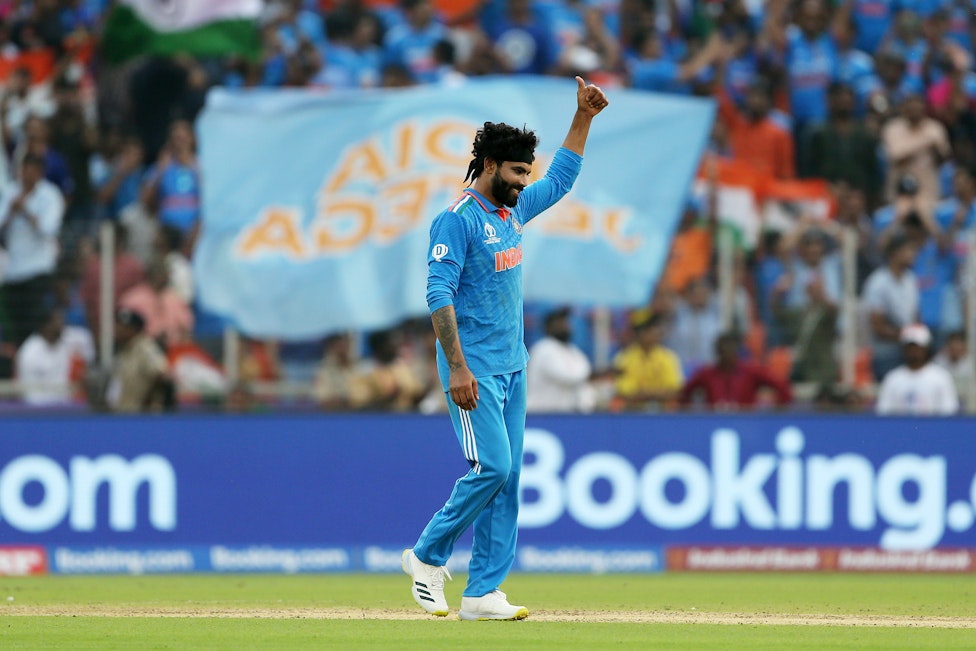 FEATURES
FEATURESIt was déjà vu in Pune.
For the fourth time in as many matches in this World Cup, India found themselves bowling first.
And for the third time in those four matches, their opponents had got off to a somewhat decent start with the bat.
If it was 71/1 after 15 overs in the case of Australia and 74/2 in 13 overs in the case of Pakistan, it was 90/0 in 14 overs in the case of Bangladesh in Pune on Thursday (October 19).
Three different venues, three different opponents and different surfaces.
Yet one similarity ties together all these games: it’s that, by the 35th over, India not only found a way to get on top of the contest, but managed to have the opponent staring down the barrel.
In Chennai, Australia were reeling at 138/5 after 35 overs, having lost all their big guns barring Maxwell; in Ahmedabad, Pakistan’s innings was effectively over at 170/6; today in Pune, Bangladesh were sitting on a far more respectable 165/4, yet it was a score which, at that point, was well below par on a surface that looked like a batter’s paradise.
So far in this World Cup, India have effectively killed off games inside the first 35 overs of the contest.
They’ve done so using their two lead-spinners, Kuldeep Yadav and Ravindra Jadeja, but what’s interesting is that the duo has not blown their opponents away by bamboozling them.
Instead, the pair has focused on choking the batters, suffocating them by denying them boundaries.
So far this World Cup, Kuldeep and Jadeja have combinedly bowled 67 overs in the 11-40 phase. Remarkably enough, together they’ve conceded less than 25 boundaries in this phase.
Neither Kuldeep nor Jadeja have been the standout bowler in the middle overs in this World Cup. But here’s the thing: both have been absurdly good, which in turn has translated into supreme control for India in the middle overs.
Only three bowlers have bowled 100+ dots in the middle overs (11-40) in this World Cup so far. India have two of them operating in tandem.
The upshot of the same? India have, by some distance, been the most dominant side with the ball in the middle overs. They’ve been so far ahead in terms of economy that it’s borderline comical.
Earlier today, Nasser Hussain on air stated the following when the Bangladesh seamers went ‘searching’ for the wickets of the Indian openers: ‘There are two ways to get a batter out: you either bowl a jaffa (sic) or build pressure by constantly bowling dots’.
It is no secret that both Jadeja and Kuldeep are capable of bowling ‘magic balls’. Jadeja, in fact, bowled one to dismiss Steve Smith at Chepauk.
However, the modus operandi of both Jadeja and Kuldeep in this World Cup has been to snarl wickets by building pressure.
Take the Bangladesh match for instance. The Tigers were positioned at a pretty comfortable 96/1 in 16 overs when the pair started bowling together in tandem. And mind you, this was on a track that had absolutely nothing for the spinners in the first innings.
The next six overs yielded just 18 runs. Bangladesh lost Najmul Shanto in this period but the true byproduct of this pressure that was built was the wicket of the set Litton Das, which came five overs later.
At 137/3 in 27.3 overs on a true wicket, Litton knew that his side were behind the eight ball - big time. He realized there was a necessity to take a risk. Desperately trying to break the shackles, he attempted to hit Jadeja for a six over long-off but paid the price and perished. It is unlikely that Litton would have taken such a high-risk option, say, had the score been either 157/3 or 168/4.
The Pakistan collapse has been well documented but even in the Australia clash, Marnus Labuschagne’s attempted sweep shot came out of frustration as much as anything. The previous seven overs had yielded just 25 runs, with Kuldeep and Jadeja bowling five of those overs. Labuschagne was looking for a way out, and thus took a risk, which backfired.
Kuldeep’s dismissal of Iftikhar Ahmed in Ahmedabad was also a ‘forced error’, to use a Tennis terminology.
The Indian pacers have also been beneficiaries of the pressure built by Kuldeep and Jadeja. After 17 games, the Indian pacers’ average of 24.00 in overs 11-40 is the best among all teams.
We know Bumrah has been in a league of his own, but the pressure exerted by Kuldeep and Jadeja (along with Bumrah) has enabled Hardik Pandya, Mohammed Siraj and Shardul Thakur to strike in the middle overs despite being expensive. Batters have been forced to take risks against the seamers and this, more often than not, has worked against them.
So far this World Cup, Pandya, Siraj and Shardul have conceded 205 runs in the 11-40 phase at an E.R of 5.69 but have picked eight crucial wickets. Against Afghanistan, it was Pandya that broke the 121-run stand between Azmatullah Omarzai and skipper Hashmatullah Shahidi. In the Pakistan clash, meanwhile, it was Siraj who ended the 82-run partnership between Babar Azam and Mohammad Rizwan.
Put simply, Kuldeep and Jadeja’s brilliance in the middle overs has elevated the entire Indian attack.
Four matches into India’s World Cup campaign, neither Kuldeep nor Jadeja have gone at more than 5 RPO in an innings. Every side has fallen prey to the middle overs Kuldeep-Jadeja choke — regardless of how well they’ve started the innings — and this has been the biggest contributor to the Men in Blue boasting a 100% record a fortnight into the competition.
Next up for India is their toughest test yet, in the form of the red-hot New Zealand, but the rich form of the Kiwi batters will count for nothing should they be unable to take down Kuldeep and Jadeja in the middle overs.